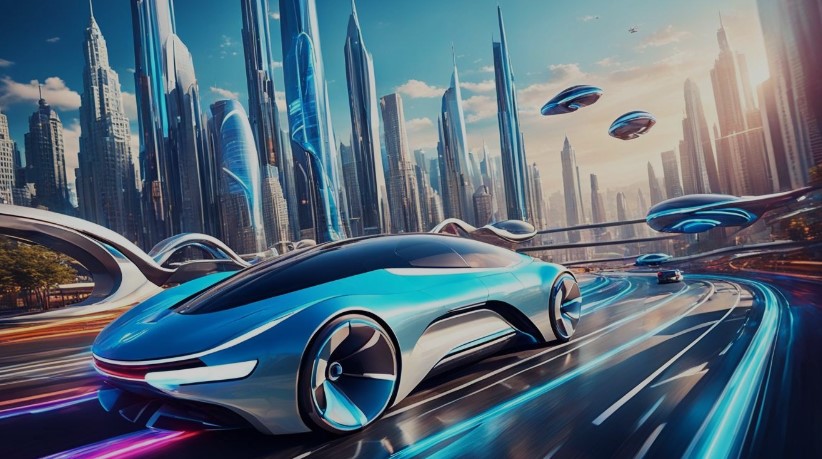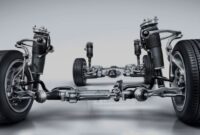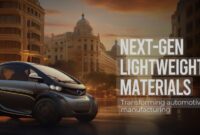Flying Cars and Hyperloop: The Next Leap in Transportation Technology
Introduction
The landscape of transportation is on the brink of a revolutionary transformation. As urban populations swell and global connectivity becomes paramount, conventional transportation modes face challenges including traffic congestion, environmental pollution, and inefficiency. Two cutting-edge technologies, flying cars and the Hyperloop, promise to redefine how people and goods move in the 21st century.
Flying cars, once a staple of science fiction, are rapidly becoming a reality with advancements in aerodynamics, battery technology, and autonomous systems. Simultaneously, the Hyperloop, a high-speed ground transportation concept, envisions ultra-fast travel through near-vacuum tubes, drastically cutting travel times between cities.
This article explores these two groundbreaking innovations, delving into their technological foundations, current developments, challenges, societal impacts, and future prospects, providing a comprehensive understanding of how flying cars and Hyperloop technology could reshape transportation.
1. The Evolution of Transportation: Setting the Stage
1.1 Historical Context
Transportation has continuously evolved from walking and animal-drawn carriages to trains, automobiles, airplanes, and subways. Each innovation aimed to increase speed, efficiency, and accessibility.
1.2 Modern Challenges
• Urban Congestion: Increasing vehicle numbers lead to traffic jams and lost productivity.
• Environmental Concerns: Fossil-fuel powered vehicles contribute significantly to pollution and climate change.
• Infrastructure Limitations: Roads and airports have physical and financial limits on capacity expansion.
• Long Commutes: Distance between residential areas and workplaces contributes to societal stress.
These challenges spur the need for novel solutions capable of overcoming current system bottlenecks.
2. Flying Cars: A New Dimension in Personal Mobility
2.1 What Are Flying Cars?
Flying cars refer to vehicles capable of both driving on roads and flying through the air. They combine the attributes of automobiles and aircraft, ideally allowing seamless transition between ground and air travel.
2.2 Types of Flying Cars
• Roadable Aircraft: Traditional small aircraft modified to drive on roads.
• VTOL (Vertical Take-Off and Landing) Vehicles: Use rotors or fans to take off and land vertically without runways.
• eVTOL (Electric VTOL): Electric-powered VTOLs designed for short urban flights with low noise and emissions.
• Hybrid Designs: Combine multiple propulsion and lift mechanisms.
2.3 Key Technologies Enabling Flying Cars
• Electric Propulsion: Batteries and electric motors reduce emissions and noise.
• Autonomous Systems: AI-driven flight control enhances safety and accessibility.
• Lightweight Materials: Carbon fiber composites improve efficiency and performance.
• Advanced Sensors and Navigation: Enable precise control in congested urban airspace.
2.4 Current Developments and Players
• Terrafugia Transition: A roadable light sport aircraft.
• AeroMobil: A Slovakian company developing a flying car prototype.
• Joby Aviation: Focused on eVTOL passenger air taxis.
• Volocopter: German developer of multicopter air taxis.
• Urban Aeronautics: Developer of compact VTOL vehicles for urban use.
2.5 Potential Benefits
• Reduced Road Congestion: Shifting some traffic to the air alleviates surface traffic.
• Faster Travel Times: Direct aerial routes shorten distances.
• Improved Accessibility: Remote areas become more reachable.
• Environmental Gains: Electric flying cars can reduce greenhouse gas emissions if powered by renewable energy.
2.6 Challenges and Barriers
• Regulation: Air traffic control and vehicle certification for urban air mobility remain unresolved.
• Safety: Ensuring reliable operation over populated areas is critical.
• Infrastructure: Need for “vertiports” or landing/takeoff pads integrated into urban areas.
• Public Acceptance: Trust and willingness to adopt flying cars.
• Cost: High development and operational costs currently limit accessibility.
3. The Hyperloop: Redefining Ground Transportation
3.1 What Is the Hyperloop?
The Hyperloop is a conceptual high-speed transportation system first proposed by Elon Musk in 2013. It involves passenger pods traveling through low-pressure tubes at speeds potentially exceeding 700 miles per hour (1126 km/h).
3.2 Core Technology Components
• Near-Vacuum Tubes: Drastically reduced air pressure to minimize aerodynamic drag.
• Magnetic Levitation (Maglev): Pods float above tracks to eliminate friction.
• Linear Electric Motors: Propel pods with rapid acceleration and deceleration.
• Air Bearings or Magnetic Suspension: Provide near-frictionless travel inside tubes.
3.3 Advantages of Hyperloop
• Extreme Speeds: Faster than commercial airplanes for short to medium distances.
• Energy Efficiency: Reduced drag and friction lower energy consumption.
• Weather Resistance: Enclosed tubes protect from external weather conditions.
• Reduced Land Footprint: Elevated or underground tubes minimize surface disruption.
3.4 Ongoing Projects and Prototypes
• Virgin Hyperloop: Leading company testing full-scale pods.
• Hyperloop Transportation Technologies (HTT): Collaborating globally on feasibility studies.
• TransPod: Developing European Hyperloop concepts.
• Multiple feasibility studies: Countries like the USA, UAE, India, and China exploring Hyperloop corridors.
3.5 Potential Routes and Use Cases
• City-to-city Travel: E.g., Los Angeles to San Francisco in under 30 minutes.
• Commuter Transportation: Rapid suburban to urban travel.
• Freight Transport: High-speed delivery of goods reducing logistics times.
3.6 Technical and Practical Challenges
• Infrastructure Costs: Building vacuum tubes over long distances is capital intensive.
• Safety and Security: Emergency evacuation and system fail-safes.
• Regulatory Approvals: Aligning standards across regions.
• Public Perception: Skepticism about new technology viability.
• Integration with Existing Systems: Connecting with airports, transit hubs, and urban centers.
4. Synergies and Differences Between Flying Cars and Hyperloop
Aspect Flying Cars Hyperloop
Mode Air and road Ground
Speed ~150-300 mph (varies) 600-750 mph (projected)
Infrastructure Vertiports, roads Vacuum tubes, stations
Energy Source Electric batteries or hybrids Electricity
Capacity Small groups or individuals Large passenger pods
Range Limited urban/suburban Intercity
Current Maturity Early prototypes, pilot projects Prototype testing, concept development
Challenges Regulation, safety, infrastructure Cost, construction complexity
Both systems aim to complement existing transport by addressing different travel distances and user needs, potentially transforming urban and intercity mobility.
5. Societal and Environmental Impacts
5.1 Urban Development and Planning
Flying cars and Hyperloop can influence city layouts by reducing dependence on sprawling road networks and encouraging more centralized, vertically-integrated urban designs.
5.2 Economic Effects
• New Industries: Design, manufacturing, maintenance, and infrastructure development.
• Job Creation: Opportunities in engineering, construction, operations, and regulation.
• Market Accessibility: Potential to reduce commute times expanding employment regions.
5.3 Environmental Sustainability
Electric propulsion in flying cars and Hyperloop’s energy-efficient design promise reduced carbon emissions compared to traditional vehicles and air travel, contributing to climate goals.
5.4 Accessibility and Equity
Ensuring these technologies are affordable and accessible is critical to avoid deepening social inequities. Public policy must guide equitable deployment.
6. The Road Ahead: What Does the Future Hold?
6.1 Integration with Autonomous and AI Technologies
Autonomous control will be vital for safety and efficiency in flying cars and Hyperloop systems. AI can optimize routes, energy use, and maintenance.
6.2 Infrastructure Development
Governments and private sector partnerships must invest in new infrastructure:
• Urban vertiports integrated into public transit networks.
• Extensive Hyperloop corridors with station hubs.
• Power systems and maintenance facilities.
6.3 Regulatory Frameworks
Clear regulations addressing safety, airspace management, and liability are essential for public acceptance and operational success.
6.4 Public Adoption and Cultural Shift
Changing perceptions and trust in new transport modes through education, demonstration projects, and pilot programs.
6.5 Environmental Goals Alignment
Both technologies must align with renewable energy adoption and sustainable urban policies to maximize environmental benefits.
Conclusion
Flying cars and the Hyperloop represent two of the most exciting frontiers in transportation technology today. By offering solutions to the pressing challenges of urban congestion, environmental impact, and slow long-distance travel, they hold the promise to redefine mobility in fundamental ways.
While significant technical, regulatory, and social hurdles remain, rapid progress in electric propulsion, AI, materials science, and infrastructure planning suggests these futuristic modes of transport are within reach. Their successful integration into everyday life could usher in a new era of connectivity, efficiency, and sustainability — truly the next leap in how humanity moves.



